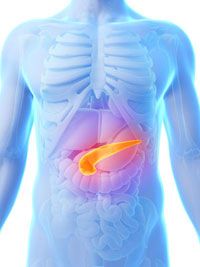Article
Oncology Nurses Poised to Make a Difference in Managing “Silent” Portal Vein Thrombosis
Author(s):
Portal vein thrombosis is a dangerous and often overlooked side effect of certain gastrointestinal malignancies such as liver and pancreatic cancer, that oncology nurses need to be more proactive in managing.
Pancreatic cancer

Portal vein thrombosis (PVT) is a dangerous and often overlooked side effect of certain gastrointestinal malignancies such as liver and pancreatic cancer, that oncology nurses need to be more proactive in managing, according to Natasha Ramrup, RN, MSN, OCN, AOCNS.
“Portal vein thrombosis is more common than we think,” said Ramrup, of Memorial Sloan Kettering Cancer Center. At her institution, Ramrup said she and her colleagues saw over 1000 new cases of PVT in a 5-year period.
“Oncology nurses need to be savvy and understand the disease process itself, because they need to be able to manage that care. If you can’t identify it, you’re not going to be able to manage it.”
Ramrup addressed this topic and provided nurses with a succinct overview of the condition at the 2016 ONS Congress.
One of the key challenges with PVT is that it is difficult to detect. In general, Ramrup said, the presentation of PVT ranges from no symptoms at all to rapidly progressive symptoms leading to death.
Acute PVT, which is the sudden formation of a thrombus, can present with severe abdominal pain, ascites, diarrhea, ileus, fever, or nausea. Chronic PVT, which develops in patients with acute PVT that was not resolved, can also present asymptomatically or with an entirely new set of symptoms, including pain, ascites, hematemesis, varices, or melena.
The most common risk factors for PVT include hypercoagulable states, hepatic cancer, inflammatory diseases, cirrhosis, and complications from medical procedures.
Even after diagnosis—typically done by ultrasound, CT scan or MRI—complications associated with PVT are dangerous for patients. Complications include thrombus extension (which is linked to incomplete recanalization of the vessel), intestinal ischemia and infarction (which occurs when the clot extends to the mesenteric artery), esophageal and gastric varices (typically seen over time in chronic PVT), and portal hypertension.
In reviewing literature on how PVT is diagnosed and managed, Ramrup said she was disappointed. Without adequate literature and clinical guidelines, two identical patients could be treated in completely different ways for PVT by different physicians and nurses.
“There are no protocols [regarding] how to manage these patients; it's based on the clinician’s experience, which is terrible. Most everything [else] is evidence-based,” she said.
“There's no research done to say how long these patients should be treated, when should you monitor them, for how long you should monitor them, and what’s the ideal treatment.”
Caring for these patients starts with a prompt identification of abnormal physical findings—and nurses are in an ideal position to do that.
“In the ever-changing healthcare environment, treatment for PVT is not a one-size-fits-all,” she said.
Beyond treatment, Ramrup says there needs be an overhaul in education. Patients with PVT need to know generally about risk factors, clinical presentation, complications, and treatment options. More specifically, patients may need to remain on an anticoagulant for life and should know how to inject themselves, if their anticoagulant needs to be refrigerated, and that they should use a soft toothbrush, among other things. Nurses are also in an ideal position to make a difference in this area, Ramrup says.
“Patient education should be an ongoing endeavor throughout the cancer spectrum for this patient population and is fundamental in the pursuit of excellent patient outcomes,” she said.
Regarding the future, Ramrup said she has high hopes but that a lot of work needs to be done. Current research is lacking in three main areas: guidelines to determine who should receive anticoagulation therapy, surveillance for patients at risk, and guidelines for patients with other conditions like cancer or inflammatory diseases who do not have cirrhosis-related PVT. Generally, future trials are “absolutely necessary to allow the clinician to make treatment decisions based on protocol rather than on clinical judgment.”
In 5 years, Ramrup said, she hopes for a sense of normalcy with PVT—in terms of awareness, education, and management—compared with other conditions.
For more information, visit Nursing.OncLive.com.
<<<









